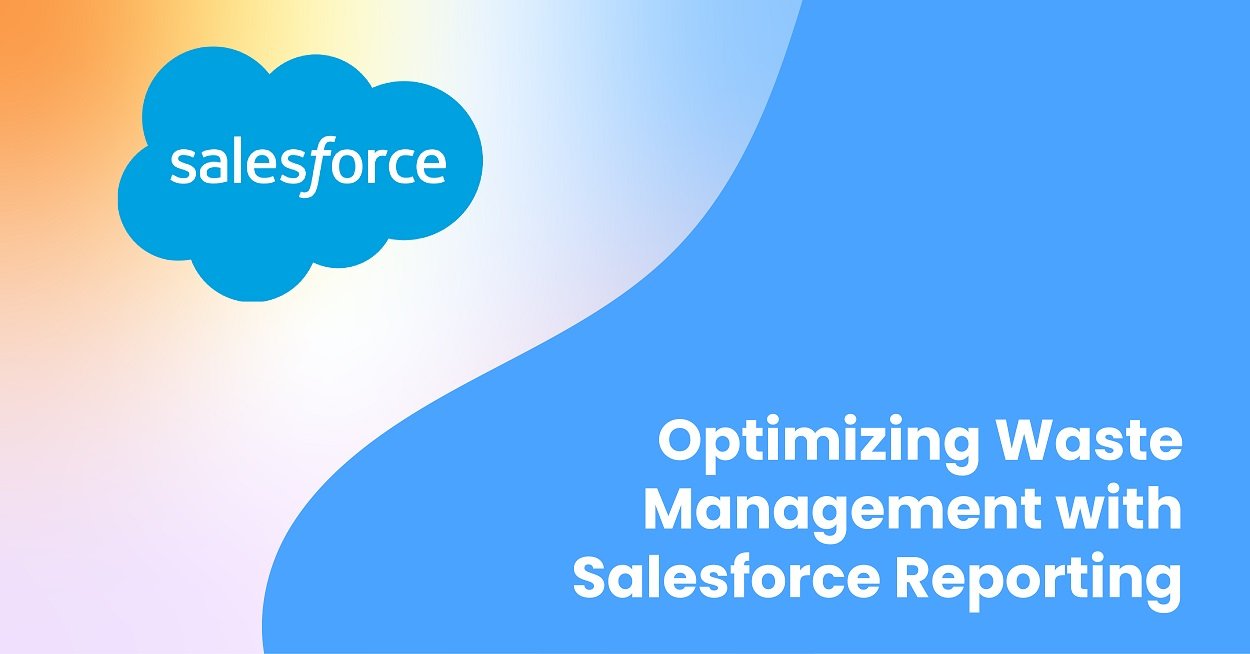
Sustainable Inventory Practices: Reducing Waste with Salesforce Analytics
Sustainability is a priority for modern businesses, and managing inventory efficiently is a key way to reduce waste. Excess stock, spoilage, and inefficient processes contribute to environmental and financial losses. Salesforce Analytics, paired with Salesforce Inventory, offers tools to optimize stock levels, streamline operations, and support eco-friendly practices.
This article outlines simple, actionable strategies to achieve sustainable inventory management using Salesforce’s powerful analytics capabilities.
Understanding the Need for Sustainable Inventory
Overstocking ties up capital and risks waste from unsold or expired goods, while understocking leads to missed sales and rushed shipments that increase carbon footprints. Sustainable inventory practices aim to balance supply with demand, minimizing excess while ensuring availability.
Salesforce Analytics provides real-time insights to make this balance achievable, helping businesses cut waste and operate responsibly.
Leveraging Salesforce Analytics for Sustainability
Salesforce Analytics, through tools like Einstein Analytics and custom dashboards, transforms raw inventory data into actionable insights. Here’s how to use it effectively:
Optimize Stock Levels with Predictive Insights
Salesforce Inventory tracks products across locations, and Einstein Analytics can forecast demand based on historical sales, seasonality, and market trends. For example, a retailer can predict holiday demand for specific items, reducing overstock by up to 20%. Set up a dashboard to monitor stock turnover rates and adjust reorder points to avoid excess inventory.
Reduce Spoilage with Real-Time Monitoring
For industries like food or pharmaceuticals, spoilage is a major concern. Salesforce Inventory’s Product Item Transactions track expiration dates and stock movements.
Create a custom report to flag items nearing expiry, enabling timely promotions or donations to minimize waste. Automated alerts via Salesforce Flows can notify managers when stock is at risk, cutting spoilage losses significantly.
Streamline Supply Chain Operations
Inefficient shipping and storage practices increase emissions. Use Analytics to analyze transportation routes and warehouse efficiency. By identifying high-demand locations, businesses can position stock closer to customers, reducing shipping distances. A dashboard tracking delivery times and carbon impact helps optimize logistics for sustainability.
Practical Steps to Get Started
Begin by enabling Salesforce Inventory in Setup under Products or Field Service Settings. Import clean product data, including SKUs and quantities, using Data Loader. Next, configure Einstein Analytics by creating datasets from inventory objects like Product Items and Locations. Build dashboards to visualize key metrics, such as stock levels, turnover, and waste indicators.
Train your team on interpreting analytics and acting on insights. For instance, a sales manager can use demand forecasts to adjust orders, while warehouse staff can prioritize moving near-expiry stock. Start small with one location or product category to test the system, then scale up.
Overcoming Common Challenges
Beginners may struggle with data accuracy or complex analytics setups. Ensure product data is clean before importing to avoid skewed insights. Use Salesforce’s guided setup wizards to simplify dashboard creation. Another challenge is user adoption—offer short, hands-on training sessions and leverage Trailhead’s “Analytics for Inventory” modules to build confidence.
Long-Term Benefits and Continuous Improvement
Sustainable inventory practices using Salesforce Analytics can reduce waste by 15-30% through better forecasting and streamlined operations. Regularly review dashboards to spot trends, like seasonal overstock risks, and refine processes. For advanced needs, integrate with Commerce Cloud for omnichannel efficiency or explore AppExchange apps for enhanced sustainability tracking.
Conclusion
By combining Salesforce Analytics with Salesforce Inventory, businesses can achieve sustainable inventory management that reduces waste and supports environmental goals. Start with clear data, simple dashboards, and focused training to see quick wins.
Over time, these practices not only cut costs but also position your business as a leader in sustainability. For tailored guidance, explore Salesforce’s resources or consult a partner to maximize impact.



Average Rating